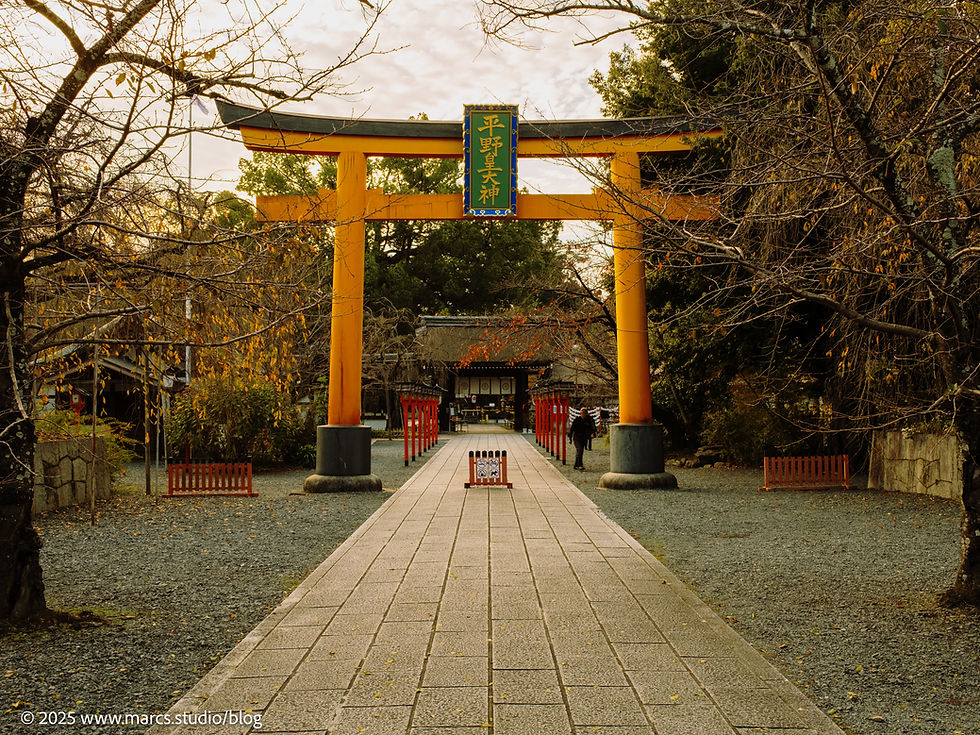Kitano Tenmangū Shrine, Kyoto, Japan
- Marc Michelmann
- Aug 26
- 1 min read
Kitano Tenmangū is a grand Shinto shrine in northwest Kyoto, dedicated to Sugawara no Michizane, a scholar, poet, and politician of the Heian period who is revered as the deity of learning and scholarship. Established in 947 to appease his spirit after his unjust exile and death, the shrine quickly grew in prominence under imperial patronage. Today, it serves as the head shrine of thousands of Tenmangū shrines across Japan, making it an important spiritual center for students and academics who come to pray for success in their studies and examinations.

The shrine is also renowned for its breathtaking seasonal beauty and cultural treasures. Its grounds are home to plum trees—Michizane’s favorite—which bloom spectacularly in late February and early March, drawing visitors to the annual Baikasai (Plum Blossom Festival). Kitano Tenmangū also houses a significant collection of cultural assets, including art and artifacts, some of which are displayed in the Kitano Tenmangū Treasure House. The vast precincts feature striking vermilion gates, traditional shrine architecture, and atmospheric pathways, making it a place where history, spirituality, and nature blend seamlessly.

Adding to its charm, the shrine hosts the monthly Tenjin-san flea market on the 25th of each month, commemorating the date of Michizane’s death. This lively event transforms the shrine grounds into a bustling market with antiques, crafts, and food stalls, attracting both locals and tourists. Whether for prayer, seasonal festivals, or cultural exploration, Kitano Tenmangū offers a rich and multifaceted experience that highlights Kyoto’s deep traditions and enduring reverence for scholarship and the arts.







































Comments